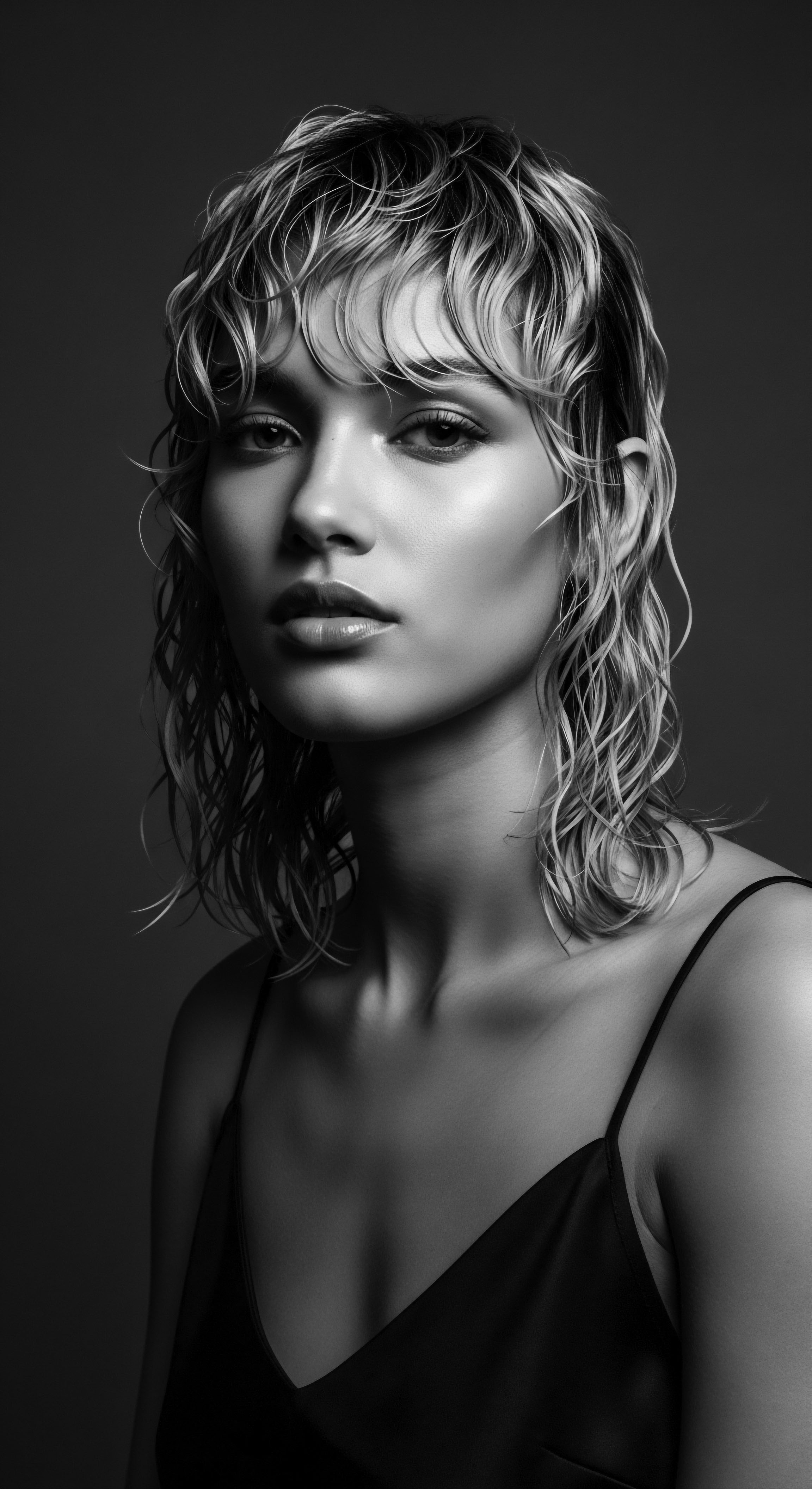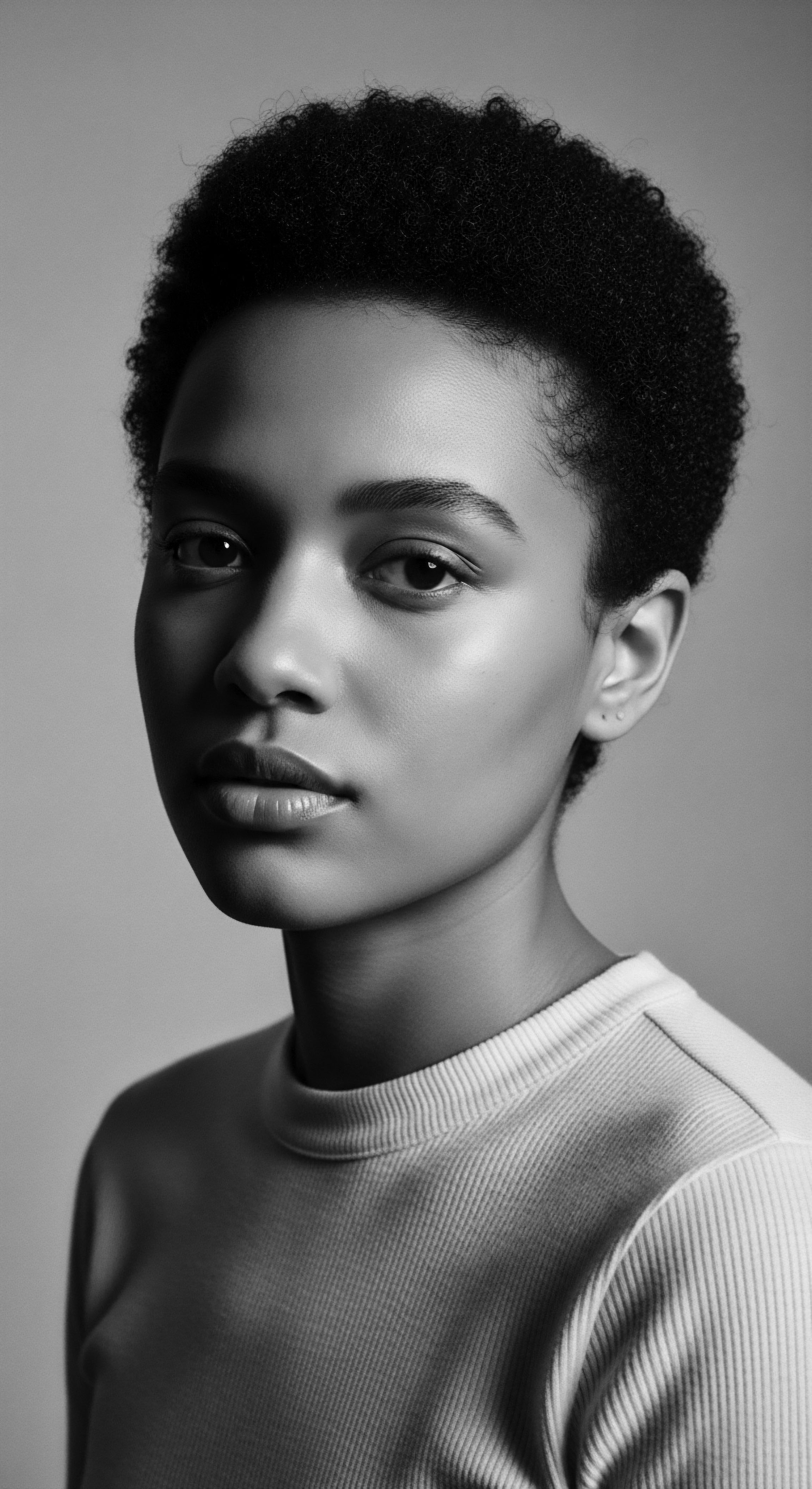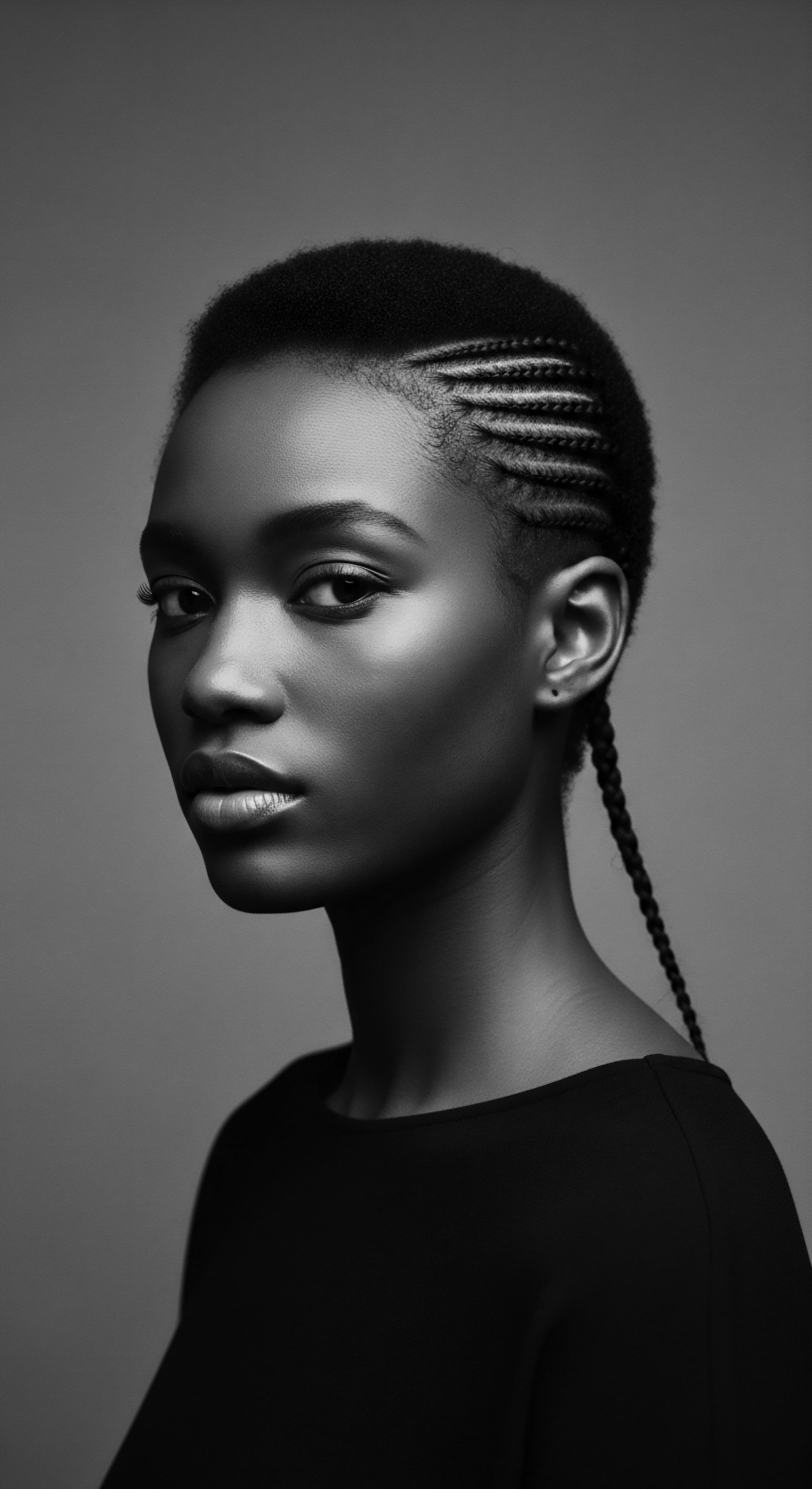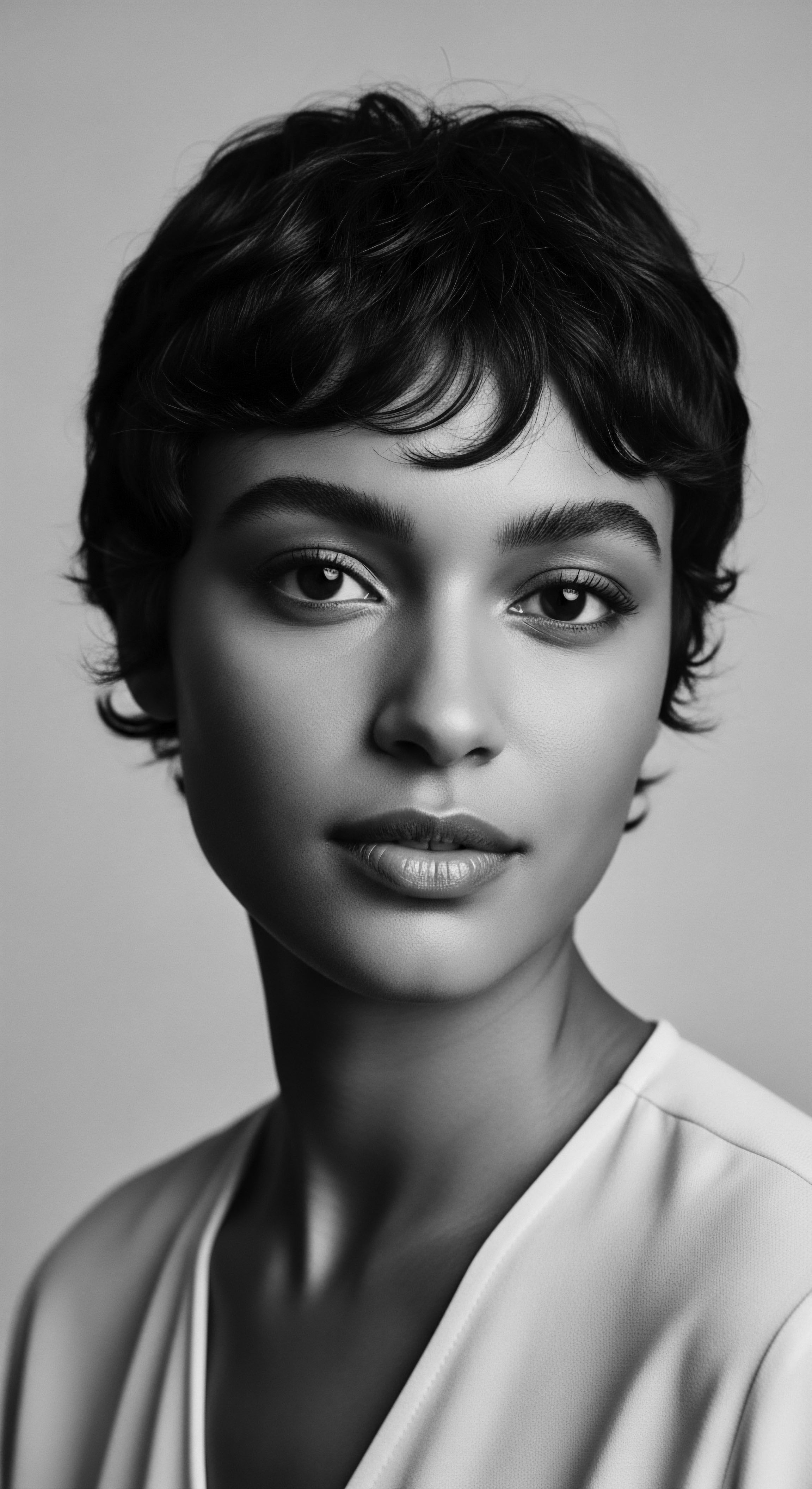
Fundamentals
The concept of Historical Beauty, within Roothea’s ‘living library,’ transcends a fleeting trend or a superficial aesthetic. Instead, it offers an explanation of the deeply rooted, culturally significant standards and practices that have shaped perceptions of attractiveness across generations, particularly concerning textured hair. This understanding is not merely an academic exercise; it is a foundational pillar for appreciating the enduring legacy of hair traditions, especially those originating from Black and mixed-race communities. Historical Beauty speaks to an inherited wisdom, a communal memory embedded within the very act of hair care and adornment.
From the earliest communal gatherings to the complex societies of today, hair has always held a profound sense, acting as a visual language for identity, status, and spiritual connection. The delineation of Historical Beauty begins with acknowledging that what was considered appealing was often inextricably linked to survival, community cohesion, and ancestral reverence. It is a statement that beauty is not universal or static, but rather a dynamic expression shaped by specific historical and cultural contexts.
Historical Beauty is the inherited cultural significance and aesthetic value ascribed to hair, especially textured hair, reflecting deep ancestral practices and communal identity.
Understanding Historical Beauty involves recognizing the biological predispositions of textured hair, its unique structural characteristics, and how ancient peoples developed ingenious methods to care for and adorn it. This foundational knowledge allows us to see how elemental biology met ancient practices, forming the earliest echoes from the source of hair care. The methods passed down through oral traditions, rituals, and observation form the bedrock of this beauty, a testament to generations of lived experience and collective knowledge.

The Roots of Adornment
Long before written records, human societies across the globe engaged in elaborate hair styling, driven by a desire for expression and communication. For textured hair, this meant developing techniques that honored its natural curl patterns, coil formations, and density. The earliest tools, crafted from natural materials, were designed to manipulate, protect, and decorate hair, transforming it into a canvas for personal and collective narratives.
- Communal Bonding ❉ Hair care sessions often served as vital social rituals, strengthening familial ties and community bonds through shared stories and collective activity.
- Symbolic Language ❉ Hair styles communicated a wealth of information, including age, marital status, social standing, tribal affiliation, and even spiritual beliefs.
- Practical Utility ❉ Many traditional styles offered protection from environmental elements, such as sun and insects, while promoting hair health.

Intermediate
Moving beyond a basic understanding, the intermediate meaning of Historical Beauty reveals its role as a living tradition, a tender thread woven through time that connects present-day textured hair experiences to a rich ancestral past. This perspective deepens our appreciation for the resilience and adaptability of Black and mixed-race hair practices, which persisted and evolved even in the face of immense historical challenges. The historical meaning of beauty in these contexts is not merely about physical appearance; it is deeply intertwined with self-preservation, resistance, and the assertion of identity against oppressive forces.
The journey of Historical Beauty for textured hair is a testament to cultural continuity. Despite the ruptures of the transatlantic slave trade and subsequent colonial influences, ancestral hair practices were meticulously preserved and adapted, often becoming clandestine acts of cultural retention and coded communication. This resilience speaks to the profound value placed on hair as a marker of heritage and belonging. The very act of maintaining traditional styles, or adapting them, became a powerful statement of self-determination and an affirmation of an unbroken lineage.
Historical Beauty for textured hair is a testament to the enduring resilience of ancestral practices, serving as a powerful link to identity and a quiet act of cultural preservation across generations.

The Echoes of Resistance
During periods of profound upheaval, hair became a silent, yet potent, form of communication and resistance. Enslaved Africans, stripped of their material possessions and often forced to shave their heads, ingeniously transformed their hair into a medium for survival and cultural memory. Cornrows, for example, were not only a practical style for managing hair in harsh conditions but also served as maps to freedom, with patterns indicating escape routes or storing rice seeds for sustenance on arduous journeys. This remarkable ingenuity highlights a deeper significance of Historical Beauty ❉ its capacity to sustain life and spirit.
The transition from pre-colonial reverence to post-slavery adaptation illustrates the dynamic nature of Historical Beauty. The forced imposition of Eurocentric beauty standards during colonialism and slavery led to the stigmatization of textured hair, often labeling it as “unprofessional” or “unclean.” This period saw the rise of chemical straightening and other methods aimed at conforming to dominant beauty ideals. Yet, even within this context, the desire to connect with ancestral aesthetics persisted, often through the adaptation of traditional styles or the development of new ones that honored the hair’s natural inclinations.
| Historical Period Pre-Colonial Africa |
| Traditional Practice/Understanding Hair as a spiritual conduit, social marker, and communal activity. Adornment with natural elements. |
| Shaping of Historical Beauty Beauty derived from alignment with ancestral beliefs, communal identity, and skilled artistry. Hair reflects life stages and societal roles. |
| Historical Period Transatlantic Slave Trade & Colonialism |
| Traditional Practice/Understanding Forced shaving, suppression of traditional styles. Hair used for clandestine communication (e.g. maps). |
| Shaping of Historical Beauty Beauty transforms into a quiet act of defiance and cultural survival, a hidden language of heritage. |
| Historical Period Post-Slavery & Early 20th Century Diaspora |
| Traditional Practice/Understanding Pressure to conform to Eurocentric standards, rise of straightening methods. |
| Shaping of Historical Beauty Beauty often defined by proximity to dominant ideals, yet a longing for inherent hair expression persists, subtly influencing choices. |
| Historical Period Mid-20th Century & Civil Rights Movement |
| Traditional Practice/Understanding Emergence of the Afro as a symbol of Black pride and political statement. |
| Shaping of Historical Beauty Beauty becomes a powerful declaration of identity, resistance, and a celebration of natural texture. |
| Historical Period The enduring significance of Historical Beauty for textured hair is seen in its continuous adaptation and re-affirmation across challenging historical landscapes. |

Academic
The academic definition of Historical Beauty delves into its intricate delineation as a socio-cultural construct, particularly as it pertains to textured hair. It is not merely an aesthetic preference, but a complex system of values, practices, and symbolic meanings that have been codified and transmitted across generations, often serving as a profound statement of identity, social cohesion, and ancestral connection within Black and mixed-race communities. This interpretation acknowledges that beauty, far from being a universal constant, is a dynamic and historically situated phenomenon, deeply influenced by power structures, migration patterns, and the enduring human need for belonging.
From an academic lens, Historical Beauty in the context of textured hair functions as a living archive, a repository of ancestral knowledge, and a tangible link to diasporic experiences. Its explication requires a multidisciplinary approach, drawing insights from anthropology, sociology, ethnobotany, and cultural studies. The persistent practice of traditional hair care rituals, the evolution of specific styles, and the symbolic significance attached to hair strands all contribute to its profound meaning. These elements collectively articulate a cultural grammar, where hair serves as a communicative medium conveying intricate social, spiritual, and historical narratives.
The study of Historical Beauty reveals how traditional hair practices were, and continue to be, sophisticated systems of care and expression. These systems were developed through empirical observation and passed down through oral traditions, often predating modern scientific understanding. For example, the use of natural oils and plant-based ingredients for hair health in various African communities speaks to an early ethnobotanical comprehension of their properties. Shea butter, coconut oil, and various herbs have been employed for centuries to nourish, protect, and style textured hair, practices now often validated by contemporary scientific research into their moisturizing and fortifying capabilities.
Historical Beauty is a culturally embedded framework for aesthetic valuation, profoundly shaped by the ancestral practices and lived experiences of textured hair communities across historical epochs.

The Unbound Helix ❉ Hair as Cultural Repository
The concept of Historical Beauty gains particular depth when examining the experiences of Black and mixed-race individuals, where hair has consistently been a site of both cultural affirmation and external imposition. The historical trajectory of textured hair, from revered adornment in pre-colonial Africa to a symbol of resistance during the transatlantic slave trade and a point of contention in post-colonial societies, underscores its profound significance. This journey is not merely about changing styles; it is about the ongoing negotiation of identity, agency, and self-worth.
Consider the Mbalantu women of Namibia , a powerful case study that profoundly illuminates Historical Beauty’s connection to textured hair heritage and ancestral practices. Their elaborate hair rituals, documented in anthropological studies, represent a meticulous and multi-stage process that begins in early childhood. Young Mbalantu girls, around the age of twelve, commence preparing their hair for adulthood by coating it with a thick paste made from finely ground tree bark of the omutyuula tree mixed with fat. This mixture is not merely cosmetic; it is believed to promote hair growth and health over several years.
As they approach sixteen, long sinew strands are attached to their hair, extending to the ground. The culmination of this preparation is the Ohango initiation ceremony, where their hair is styled into four long, thick braids known as Eembuvi. After the ceremony, signifying their transition to womanhood, a new layer of the paste is applied, and the elongated plaits are arranged into an elaborate headdress, signifying marital status. This practice is not an isolated phenomenon; it reflects a broader African tradition where hair served as a living resume, communicating social status, age, marital status, and even spiritual beliefs.
(Spring, 1997; Sieber & Herreman, 2000). The sheer duration and communal effort involved in these practices highlight that Historical Beauty was a process of embodied knowledge, a collective investment in visible identity and cultural continuity.
The Mbalantu tradition provides a compelling example of how hair care transcended mere aesthetics to become a ritualized practice that reinforced social structures, transmitted cultural values, and preserved ancestral memory. The length and adornment of the hair were not arbitrary; they were meticulously maintained visual cues that spoke volumes about an individual’s place within the community and their adherence to inherited customs. This systematic approach to hair care, where specific ingredients and styling methods were passed down through generations, exemplifies the depth of ancestral wisdom embedded within the Historical Beauty concept. It underscores that hair was a medium for storytelling, a physical manifestation of lineage and collective experience.
Furthermore, the academic discourse on Historical Beauty addresses the ongoing challenges faced by textured hair in contemporary society. Despite growing natural hair movements, biases persist, often rooted in historical perceptions that devalued Black hair. A 2023 study by the CROWN Coalition, a group dedicated to ending hair-based discrimination, found that Black Women’s Hair is 2.5 Times More Likely to Be Deemed Unprofessional Than Other Women’s Hair, directly impacting advancement opportunities.
This statistic underscores the enduring legacy of historical prejudice, where Eurocentric beauty standards continue to shape perceptions of professionalism and attractiveness. The fight for hair liberation is, therefore, a continuation of the historical struggle for self-definition and cultural affirmation.
The meaning of Historical Beauty, in this academic sense, is a call to recognize and dismantle these lingering biases, to re-center textured hair within its rightful place of reverence and respect. It advocates for an understanding that honors the inherent beauty of diverse hair textures, celebrating their biological uniqueness and the rich cultural narratives they embody. This recognition allows for a more equitable and inclusive understanding of beauty, one that acknowledges the profound historical and cultural contributions of Black and mixed-race hair experiences.
Academically, the Historical Beauty concept also encompasses the intersection of hair with spiritual and psychological well-being. In many African cultures, hair was considered the closest point to the divine, a conduit for spiritual energy and ancestral connection. This spiritual designation meant hair care was not just a physical act but a sacred ritual, a practice that connected individuals to a broader cosmic order.
The emotional and psychological impact of hair on self-perception and identity, particularly for those with textured hair, is a recurring theme in sociological and psychological studies. The act of caring for textured hair, using traditional methods, can serve as a meditative practice, fostering a sense of groundedness and connection to one’s lineage.
The ongoing scholarly exploration of Historical Beauty continues to shed light on its multifaceted dimensions. Researchers delve into historical texts, ethnographic accounts, and oral histories to reconstruct the nuanced meanings of hair in different eras and regions. This research often highlights how traditional practices were environmentally sustainable and fostered community bonds, contrasting with modern industrial approaches to beauty. The aim is to provide a comprehensive specification of Historical Beauty that not only describes its past manifestations but also informs its contemporary relevance, ensuring that the legacy of textured hair heritage is understood, honored, and celebrated.
- Hair as Identity Marker ❉ Traditional African societies used hairstyles to denote social status, age, marital status, and tribal affiliation.
- Protective Styling Heritage ❉ Styles like braids and twists, rooted in ancient practices, served as protective measures against environmental damage and promoted hair health.
- Spiritual Connection ❉ In many African cosmologies, hair was regarded as a sacred link to the divine and ancestors, a channel for spiritual energy.

Reflection on the Heritage of Historical Beauty
The journey through the definition of Historical Beauty reveals more than a mere academic exercise; it unfolds as a profound meditation on the enduring spirit of textured hair and its boundless heritage. As Roothea’s ‘living library’ suggests, this is not a static collection of facts, but a breathing archive, a testament to the resilience and creative ingenuity embedded within Black and mixed-race hair traditions. The very fibers of each strand carry echoes from the source, whispering stories of ancient practices, communal care, and an unbroken lineage of beauty.
The tender thread of Historical Beauty continues to bind us to our ancestors, reminding us that hair care is, at its heart, an act of remembrance and reverence. It is a dialogue between past and present, where ancestral wisdom meets contemporary understanding, allowing us to see our textured crowns not as deviations from a narrow ideal, but as unique expressions of a profound, inherited legacy. This deeper understanding cultivates a sense of belonging, a recognition that our individual hair journeys are part of a grander, collective narrative.
The unbound helix of textured hair, with its diverse patterns and infinite possibilities, symbolizes freedom and self-determination. It represents a future where the historical burdens of prejudice give way to uninhibited celebration. Roothea believes that by honoring the Historical Beauty of textured hair, we not only preserve a precious cultural heritage but also empower individuals to step into their fullest selves, connected to their roots and confident in their inherent splendor. This ongoing conversation, this continuous act of learning and cherishing, ensures that the spirit of a strand remains vibrant, a beacon of identity and strength for generations to come.

References
- Byrd, A. D. & Tharps, L. D. (2001). Hair Story ❉ Untangling the Roots of Black Hair in America. St. Martin’s Press.
- Cobb, J. N. (2023). New Growth ❉ The Art and Texture of Black Hair. Duke University Press.
- Davison, P. (2003). The Art of the Body ❉ Adornment and Identity in Africa. Smithsonian National Museum of African Art.
- Hooks, B. (1992). Black Looks ❉ Race and Representation. South End Press.
- Jacobs-Huey, L. (2006). From the Kitchen to the Parlor ❉ Language and Becoming in African American Women’s Hair Care. Oxford University Press.
- Mercer, K. (1994). Welcome to the Jungle ❉ New Positions in Cultural Politics. Routledge.
- Opoku, K. A. (1978). West African Traditional Religion. FEP International Private Limited.
- Rooks, N. (1996). Hair Raising ❉ Beauty, Power, and the Transformation of Black Women’s Consciousness. Rutgers University Press.
- Sieber, R. & Herreman, F. (2000). Hair in African Art and Culture. Museum for African Art.
- Spring, A. (1997). African Textiles ❉ Colour and Creativity Across a Continent. Thames & Hudson.
